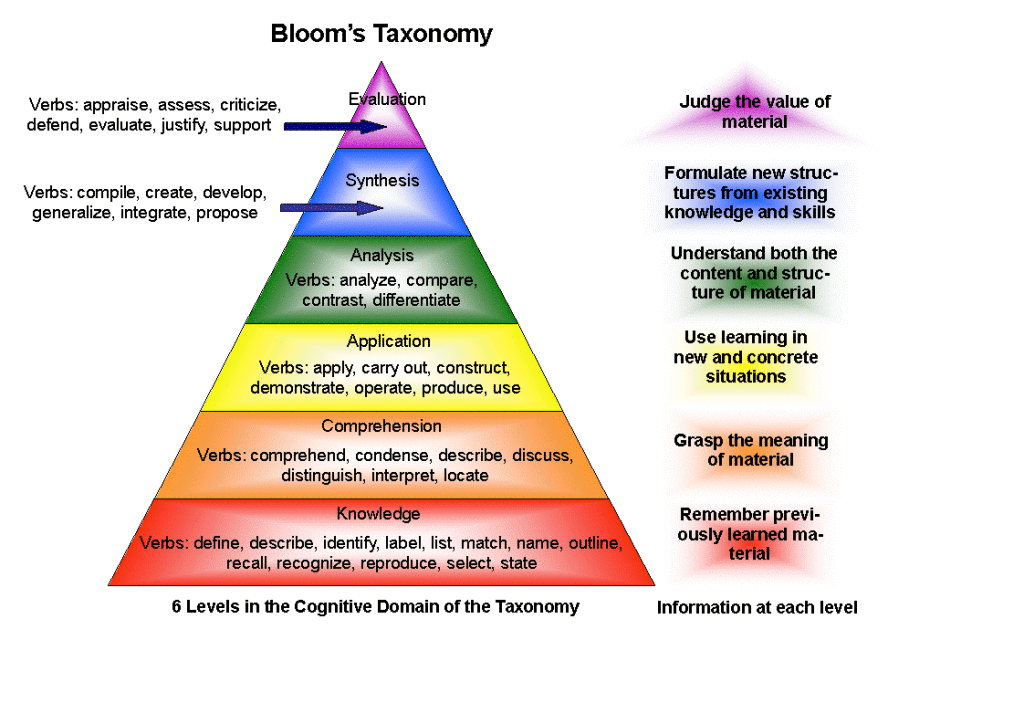Questioning Skills
The final few pages of chapter 6 struck me as very important. It talks about questioning skills— the ability to ask effective questions. The picture on the left is a great basis for effective questioning. It gives you the verbs to use depending on the level of understanding you’re going for. Are you looking for basic knowledge? Do you want your kids to analyze the information? Or should they be applying the lesson? A lot of times teachers ask closed-ended questions where a student can simply answer “yes” or “no,” or they ask leading questions in which the answer is in the question. Another issue is wait-time. How long do you wait for an answer after asking a question? If you’re looking for a simple yes/no or have asked a question towards the bottom of the pyramid, then you shouldn’t need to wait very long. However, if you’re getting into the higher levels of thinking, then you need to give students more time to answer! The results of a study found that if you give students 3-5 seconds to think and answer it will increase the length of students’ responses, voluntary and relevant answers, student questions, student interactions with each other, and thoughtful responses. More time will also decrease failures to respond.
Here’s a list of effective questioning techniques I feel is worth copying verbatim:
- Phrase questions clearly. Avoid vague questions.
- Ask questions that are purposeful in achieving the lesson’s intent.
- Ask brief questions, because long ones are often unclear.
- Ask questions that are thought-provoking and demand original and evaluative thinking.
- Encourage students to respond in some way to each question asked.
- Distribute questions to a range of students, and balance responses from volunteering and non-volunteering students.
- Avoid asking “yes-no” and “leading” questions.
- To stimulate thinking, probe students’ responses or demand support for their answers.
- Provide students with feedback about their responses, both to motivate them and to let them know how they are doing.
